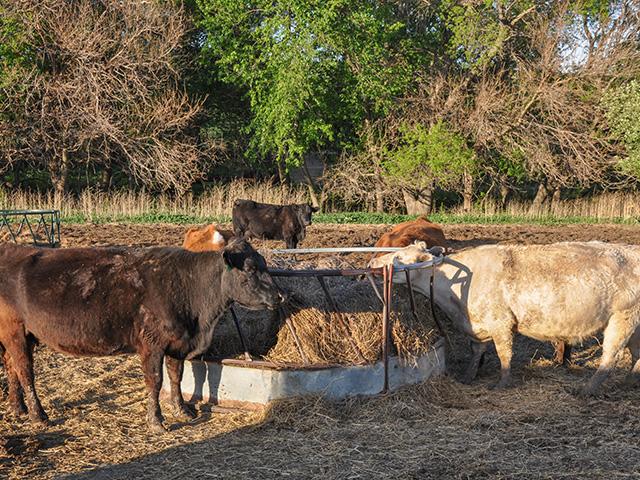Three Tips for Buying Hay
MU Extension: Weigh, Test and Sample Hay Before Buying
OMAHA (DTN) -- On my family's small eastern Nebraska family farm, we have always had cattle -- first dairy cows and now beef. We have always put up some alfalfa and brome grass hay, and in recent years we have put up enough hay to not have to purchase any.
However, this will mostly likely change this upcoming hay feeding season. Severe drought in our area this growing season limited both haying and grazing.
We have been feeding some hay since August -- about a month earlier than normal. With the elevated price of hay, we know we are going to buy some expensive hay this winter.
Although cattle can eat a variety of feed, their most common source is hay. It could be alfalfa hay, it could be different grass hays or maybe even some mixture of both. Many cattle producers raise hay themselves while others buy all of their needs.
When my family and other cattle producers are looking for hay, we want to be assured we get what we pay for in our purchase. University of Missouri (MU) Extension livestock specialist Eldon Cole suggests those who are buying (or even selling) hay need to weigh, test and sample hay to assure hay quality.
Beef producers need good-quality hay to boost profits Cole said in an MU press release and at times hay production is not always the greatest quality. Missouri cattle producers often face uncertainty when buying hay because there are no uniform standards for fescue, the state's No. 1 source of grass hay.
P[L1] D[0x0] M[300x250] OOP[F] ADUNIT[] T[]
There are some forms of grading systems for marketing alfalfa hay, however, that allow buyers to obtain more information to make better decisions.
Cole said a recent report from Kansas showed that buyers were paying $1 per relative feed value (RFV) point when buying alfalfa hay. So, for example, buyers paid $142 per ton for alfalfa with an RFV score of 142.
Buyers should consider three important aspects when buying hay, according to Cole:
-- Weigh a few bales on a scale. Not all round bales weigh 1,000 lbs., and in many cases they weigh less than that, so you could be paying more per bale than you should.
-- Core samples from 10 to 15 bales to assure quality. Send these samples to a lab and analysis for moisture, fiber, energy and protein to get the relative forage quality (RFQ) and help with ration balancing. The test generally costs about $25.
-- Look for hay that has been stored properly. The first choice would be to buy hay stored inside and the second choice is hay wrapped with net-wrap.
Cole said whatever you choose to purchase, store your hay that you buy in a covered location. Locate your feeding area in a well-drained open area with easy access for feeding. This helps reduce waste.
"The greatest expense cattle producers face each year is forage cost, whether it's pasture, hay or haylage," Cole said. "Use a sharp pencil to evaluate whether to raise your hay or to buy it."
The Missouri Department of Agriculture offers a directory that lists hay availability by county at https://agmarketnews.mo.gov/….
To read the entire MU Extension press release, go to https://extension.missouri.edu/….
Russ Quinn can be reached at russ.quinn@dtn.com
Follow him on Twitter @RussQuinnDTN
(c) Copyright 2020 DTN, LLC. All rights reserved.




